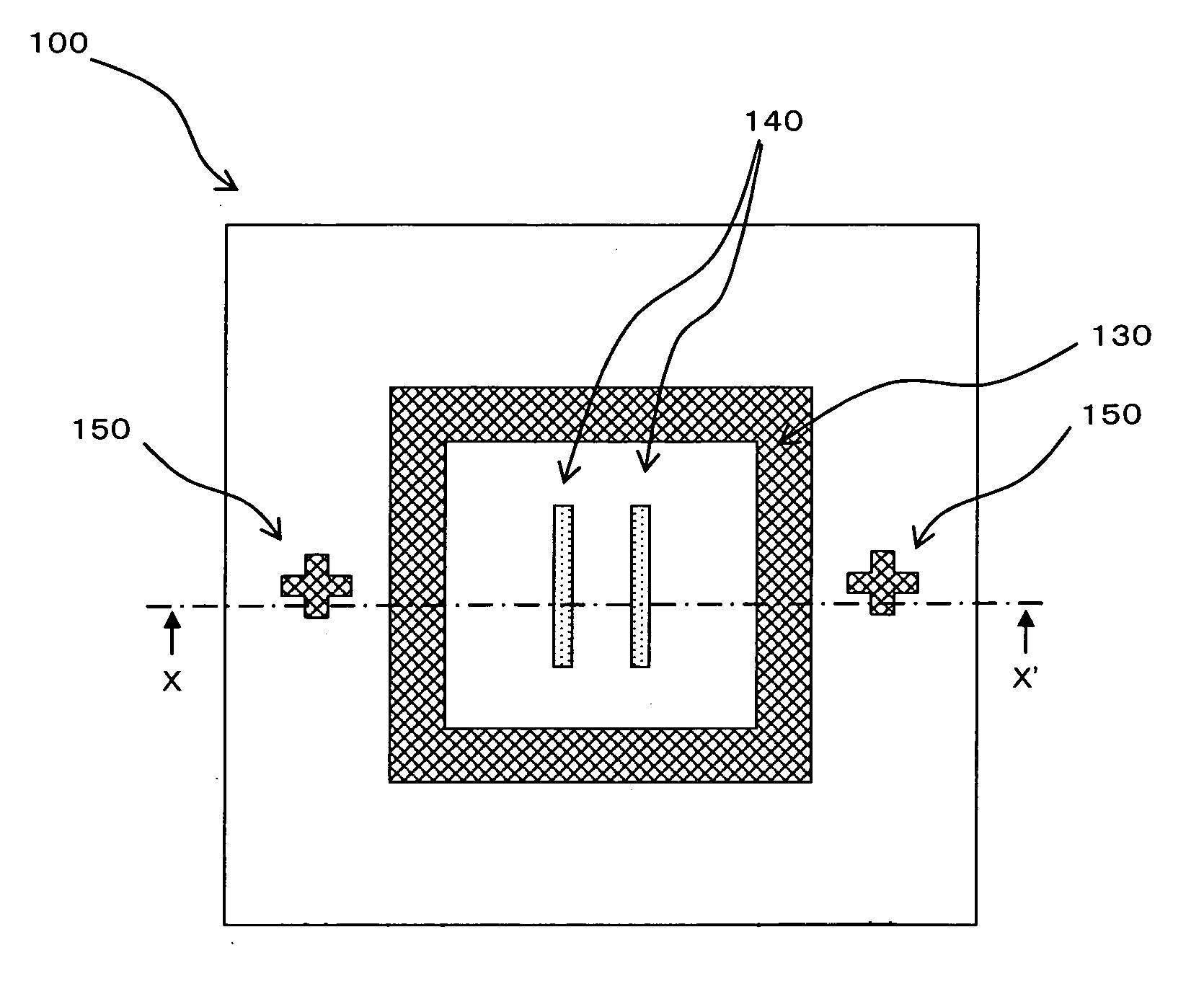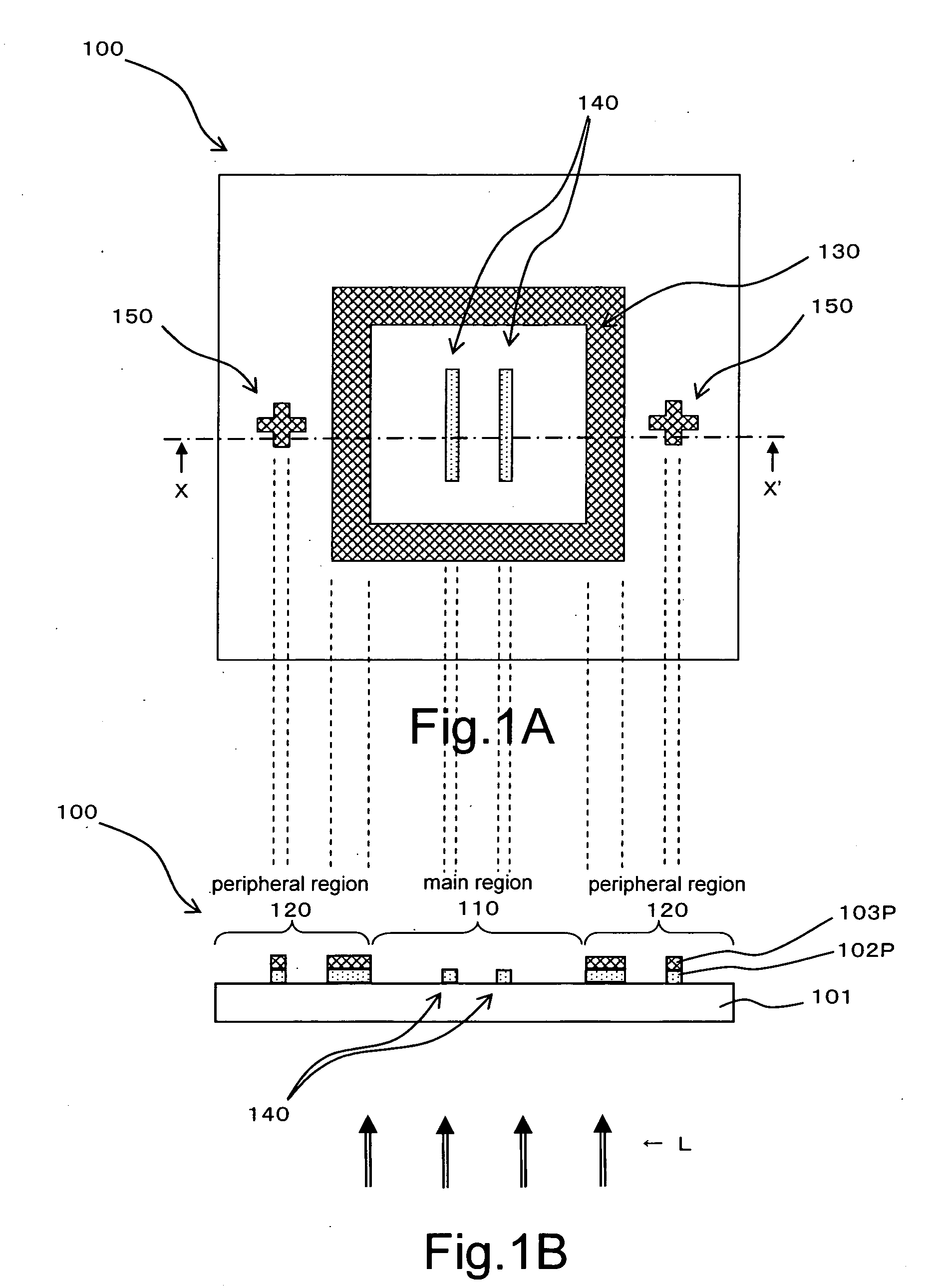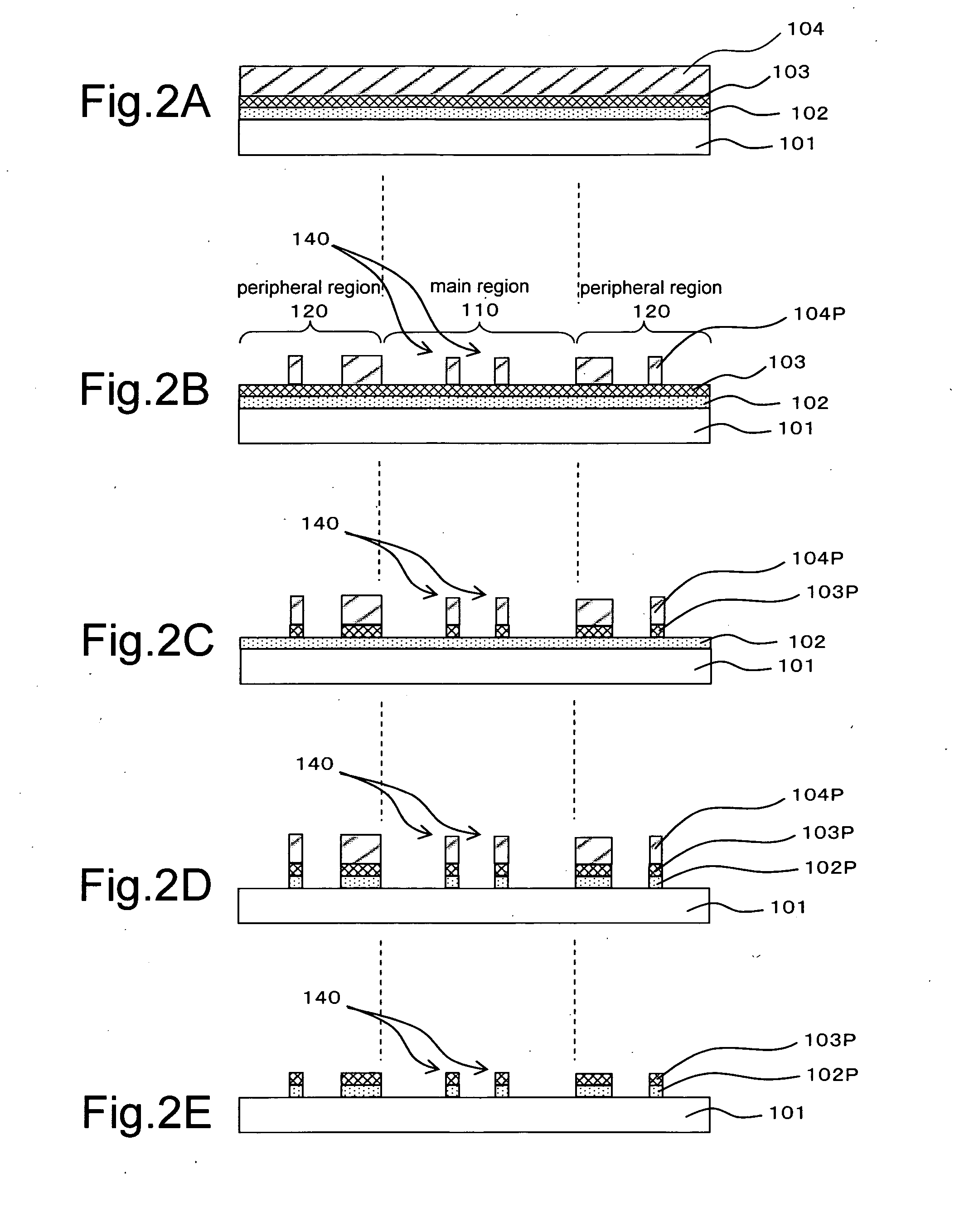Photomask, method for fabricating photomask, and method for fabricating semiconductor device
a technology of photomask and semiconductor, which is applied in the direction of photomechanical equipment, originals for photomechanical treatment, instruments, etc., can solve the problems of stray light still adversely affecting the transfer of circuit patterns to wafers, the accuracy of line width in such transfer patterns is greatly affected, and the manufacturing cost of photomasks for forming patterns increases. , to achieve the effect of suppressing the effect of stray light, high positional accuracy and high accuracy patterning
- Summary
- Abstract
- Description
- Claims
- Application Information
AI Technical Summary
Benefits of technology
Problems solved by technology
Method used
Image
Examples
example
[0077] An example of a method for fabricating a device using a photomask according to the present invention will be described below with reference to FIGS. 7A, 7B, 8C, 8D, 9E, 9F, 10G, and 10H.
[0078] First, in a silicon substrate (wafer) 10, element isolation films 12 embedded in trenches having a depth of, for example, 300 nm are formed, for example, by a shallow trench isolation (STI) process (refer to FIG. 7A). In the drawing, a left-side element region corresponds to an N-type transistor forming region, and a right-side element region corresponds to a P-type transistor forming region.
[0079] Subsequently, for example, using a thermal oxidation method, a sacrificial oxide film 14 is formed over the element regions delimited by the element isolation films 12 (refer to FIG. 7B).
[0080] Then, a first photoresist film 16 is formed by photolithography so as to expose the N-type transistor forming region and cover the P-type transistor forming region (refer to FIG. 8C).
[0081] Using t...
PUM
| Property | Measurement | Unit |
|---|---|---|
| transmittance | aaaaa | aaaaa |
| depth | aaaaa | aaaaa |
| thickness | aaaaa | aaaaa |
Abstract
Description
Claims
Application Information
 Login to View More
Login to View More - R&D
- Intellectual Property
- Life Sciences
- Materials
- Tech Scout
- Unparalleled Data Quality
- Higher Quality Content
- 60% Fewer Hallucinations
Browse by: Latest US Patents, China's latest patents, Technical Efficacy Thesaurus, Application Domain, Technology Topic, Popular Technical Reports.
© 2025 PatSnap. All rights reserved.Legal|Privacy policy|Modern Slavery Act Transparency Statement|Sitemap|About US| Contact US: help@patsnap.com



